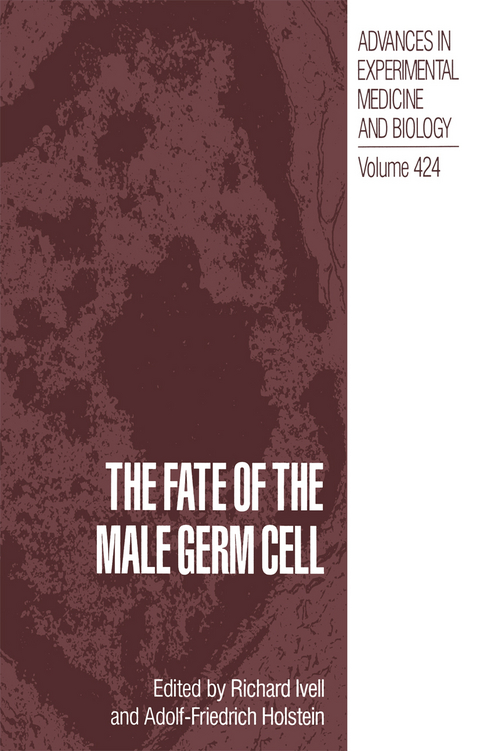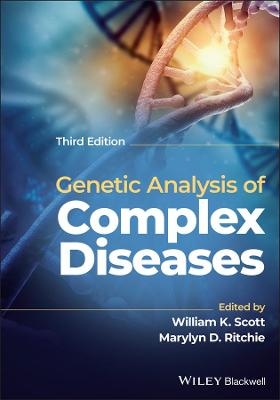
The Fate of the Male Germ Cell
Springer-Verlag New York Inc.
978-1-4613-7711-5 (ISBN)
1. Human Reproduction: The Missing Parts of the Puzzle.- Section A: Genes, Chromosomes, and Fertility.- 2. Human Y Chromosome Deletions in Yg11 and Male Fertility.- 3. Frequency of Y-Chromosome Microdeletions (Yq11.22–23) in Men with Reduced Sperm Quality Requesting Assisted Reproduction.- 4. Histone Gene Expression and Chromatin Structure during Spermatogenesis.- 5. Histone Gene Expression in the Human Testis.- Section B: Germ Cell Differentiation and Tumorigenesis.- 6. Endocrine Control of Germ Cell Proliferation in the Primate Testis: What Do We Really Know?.- 7. Quantification of Somatic and Spermatogenic Cell Proliferation in Testes of Ruminants.- 8. The Immortalized Mouse Germ Cell Lines GC-1spg and GC-2spd as a Model for Mitochondrial Differentiation during Meiosis.- 9. A Novel Endozepine-like Peptide (ELP) Is Exclusively Expressed in Male Germ Cells.- 10. Investigation on the Proliferation of Spermatogonia in Normal and Pathologic Human Seminiferous Epithelium.- 11. Rapid Method to Detect CIS-Cells.- 12. Testicular Tumor Cells Pass through the Epididymal Ducts.- 13. AgNOR in Human Leydig Cell Tumors.- 14. Endocrinological Disturbances in Germ Cell Tumour Patients: Comparison of Hormone Levels and Kinetics in Peripheral and Testicular Vein Blood.- 15. Reinvestigation of Patients after Primary Therapy of Testicular Tumor.- 16. Carcinoma-in-Situ in Testes with Germ Cell Tumour: Comparison of Clinical Parameters with Histological Findings in Testicular Tissue Near to and Distant from the Tumour.- 17. Intratesticular Sperm Extraction: Basis for Successful Treatment of Infertility in Men with Ejaculatory Azoospermia.- Section C: The Role of the Testicular Accessory Cells.- 18. Molecular Pathophysiology of the Pituitary-Gonadal Axis.- 19. Fetal and PerinatalInfluence of Xenoestrogens on Testis Gene Expression.- 20. Protease-Protease Inhibitor Interactions in Sertoli Cell-Germ Cell Crosstalk.- 21. New Aspects of Leydig Cell Function.- 22. Sertoli Cell-Specific Gene Expression in Conditionally Immortalized Cell Lines.- 23. Functional Markers for Fetal and Postnatal Differentiation of Rat Leydig Cells.- 24. Enzyme Histochemical Addition to Morphological Features of Leydig Cells in Senium.- 25. Differential Display PCR Cloning of W/WV-Mutant Testis Specific Genes.- 26. Immunoreactivity for Glial Cell Markers in the Human Testis.- 27. Insulin-like Growth Factor-Binding Protein (IGFBP)-5 in Human Testicular Tubules.- 28. A Novel Role for Atrial Natriuretic Peptide (ANP) in Testis.- 29. Nerve Growth Factor (NGF) Receptors in Male Reproductive Organs.- 30. Delayed Onset of Spermatid Elongation in the Pubertal Golden Hamster Testis Depends on a Developmental Deficiency of Leydig Cell-11ß-HSD.- Section D: Compartmentalization, Vascularization, and Angiogenesis.- 31. Compartmentalization of the lntertubular Space in the Human Testis.- 32. Microcirculation and the Vascular Control of the Testis.- 33. Expression of VEGF and Its Receptors and Capillary Density in Leydig Cell Tumors of the Human Testis.- 34. Angioarchitecture of the Human Spermatic Cord.- 35. Morphological and Functional Aspects of the Human Spermatic Cord Veins.- 36. Semen Analysis after Treatment of Varicocele by Antegrade Scrotal Sclerotherapy.- 37. VEGF Modulates the Capillaries of the Human Epididymis.- 38. Endothelin-1 and Its Receptors in the Human Epididymis.- Section E: Post-Testicular Sperm Maturation.- 39. The Role of Apocrine Released Proteins in the Post-Testicular Regulation of Human Sperm Function.- 40. The Molecular Biology of the Sperm Surface:Post-Testicular Membrane Remodelling.- 41. Purification and Structural Analysis of Sperm CD52, a GPI-Anchored Membrane Protein.- 42. Measurement of Calcium in Single Human Spermatozoa.- 43. Putative Role of a Serpin in Modulation of Acrosome Reaction.- 44. Immunoelectron Microscopic Studies on Outer Dense Fibres.- 45. The Use of Spin-Labelled Phospholipid Analogues to Characterize the Transverse Distribution of Phospholipids and the Activity of Phospholipad?-?2 in the Cell Membrane of Bull Spermatozoa.- Section F: Control of the Male and Female Tracts.- 46. Interactions between Leukocytes and the Male Reproductive System: The Unanswered Questions.- 47. Oxytocin and Male Reproductive Function.- 48. Sensory Innervation of the Human Penis.- 49. The Uterine Peristaltic Pump: Normal and Impeded Sperm Transport within the Female Genital Tract.- 50. Egg-Cumulus-Oviduct Interactions and Fertilization.- Section G: Gamete Interaction and Fertilization.- 51. The Cell Biology of Fertilization.- 52. The Role of Carbohydrates in Sperm-Egg Interaction.- 53. X-Ray Crystallographic Analysis of Boar PSP-I/PSP-II Complex: A Zona Pellucida-Binding Protein.- 54. The Zona Pellucida “Receptors”.
| Reihe/Serie | Advances in Experimental Medicine and Biology ; 424 |
|---|---|
| Zusatzinfo | XV, 332 p. |
| Verlagsort | New York, NY |
| Sprache | englisch |
| Maße | 156 x 244 mm |
| Themenwelt | Medizin / Pharmazie ► Medizinische Fachgebiete |
| Studium ► 2. Studienabschnitt (Klinik) ► Humangenetik | |
| Veterinärmedizin | |
| ISBN-10 | 1-4613-7711-0 / 1461377110 |
| ISBN-13 | 978-1-4613-7711-5 / 9781461377115 |
| Zustand | Neuware |
| Informationen gemäß Produktsicherheitsverordnung (GPSR) | |
| Haben Sie eine Frage zum Produkt? |
aus dem Bereich


